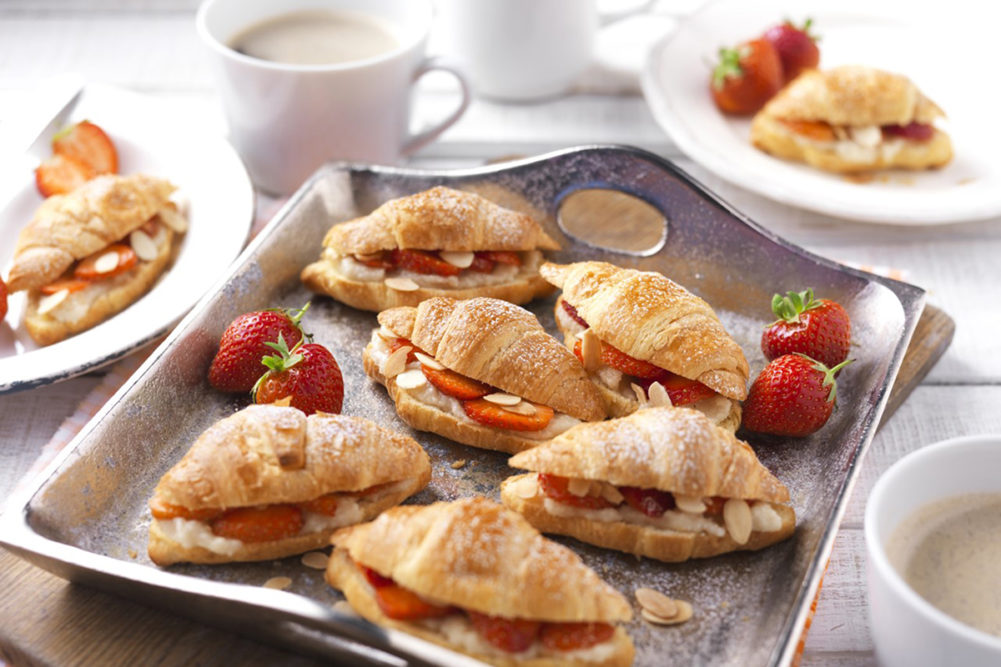Despite inflation, dollar sales in bakery are up almost 12% from last year, according to IDDBA Marketplace Report data from June, indicating that the instore bakery has indeed bounced back from COVID, said Paul Baker, founder of Manchester, UK-based St Pierre Bakery.
There are multiple factors at play that are working in favor of the instore bakery, Baker said. Foot traffic is up in stores and the increase in at-home socializing and celebrations at home continues to grow, thanks to inflation.
“This combination of factors means that shoppers are heading to the deli and instore bakery for inspiration for ‘special’ meals at home,” he said. “Whilst they may be feeling the pinch financially, a simple upgrade on their usual bakery items will still prove less expensive than dining out.”
There’s a real opportunity for retailers to inspire shoppers and provide affordable luxuries, working with brands like St Pierre to ensure basket spend at a time when shoppers are, economically-speaking, more discerning.
“It’s about delivering ‘perceived’ value,” Baker said. “Most shoppers don’t assess value just from the price tag – especially in food purchases. They look at the quality, the authenticity, and the versatility of products across different meal occasions.”
During the pandemic, the instore bakery was challenged by changes in shopping habits that meant the foot traffic simply wasn’t there, Baker said. That caused a shift in consumer habits so dramatic that it has transformed certain sectors, and instore bakery is one of them.
“The working world has changed. People don’t want to return to pre-pandemic office commutes and companies are embracing flexible working policies which means the meal occasions that moved into the home during the pandemic, will stay there – at least for part of the week.”
That shift has created new shopper needs and the instore bakery is well-placed to meet them.
Inflation-proof
Inflation is being felt across the board, in every sector. As a result, Baker said, there are two camps of shoppers: those who spend a little extra knowing they’re getting a better quality and become brand loyal; and those who don’t spend the extra, but don’t have an experience that keeps them coming back.
“It’s also important to consider the challenges to suppliers in the current climate too,” he said. “We took the decision to invest in our supply chain to ensure we maintained fill rates of at least 98% – delivering on time and in full for retailers and ensuring availability for consumers. That investment meant we were able to drive trial that has led to repeat purchase.”
The premiumization trend is here to stay, Baker said. Previously, shoppers were elevating their meals at home because they couldn’t travel or dine out in the pandemic. Now that the cost of living is going up, consumers are still looking to treat themselves well at home, and eating better quality food and entertaining guests at home is still more cost effective than going out.
“Anything that is saving shoppers time and provides an easy solution for entertaining at home is doing well throughout the store – not just in the bakery,” he said. “Coffee shop products are also experiencing significant growth. Croissants are in growth in both dollar and unit sales in the June report from IDDBA and St Pierre croissant sales mirror that growth.”
St Pierre’s mini croissant sales are up 42%, mini chocolate croissants up 189% and 8 count Butter Croissants are up 41% year on year.
“A lot of instore bakery is about offering inspiration to shoppers too – particularly to drive occasioned sales,” Baker said. “One category we are moving into is the bake at home sector, which experiences sales uplifts around occasion-led buying.”

